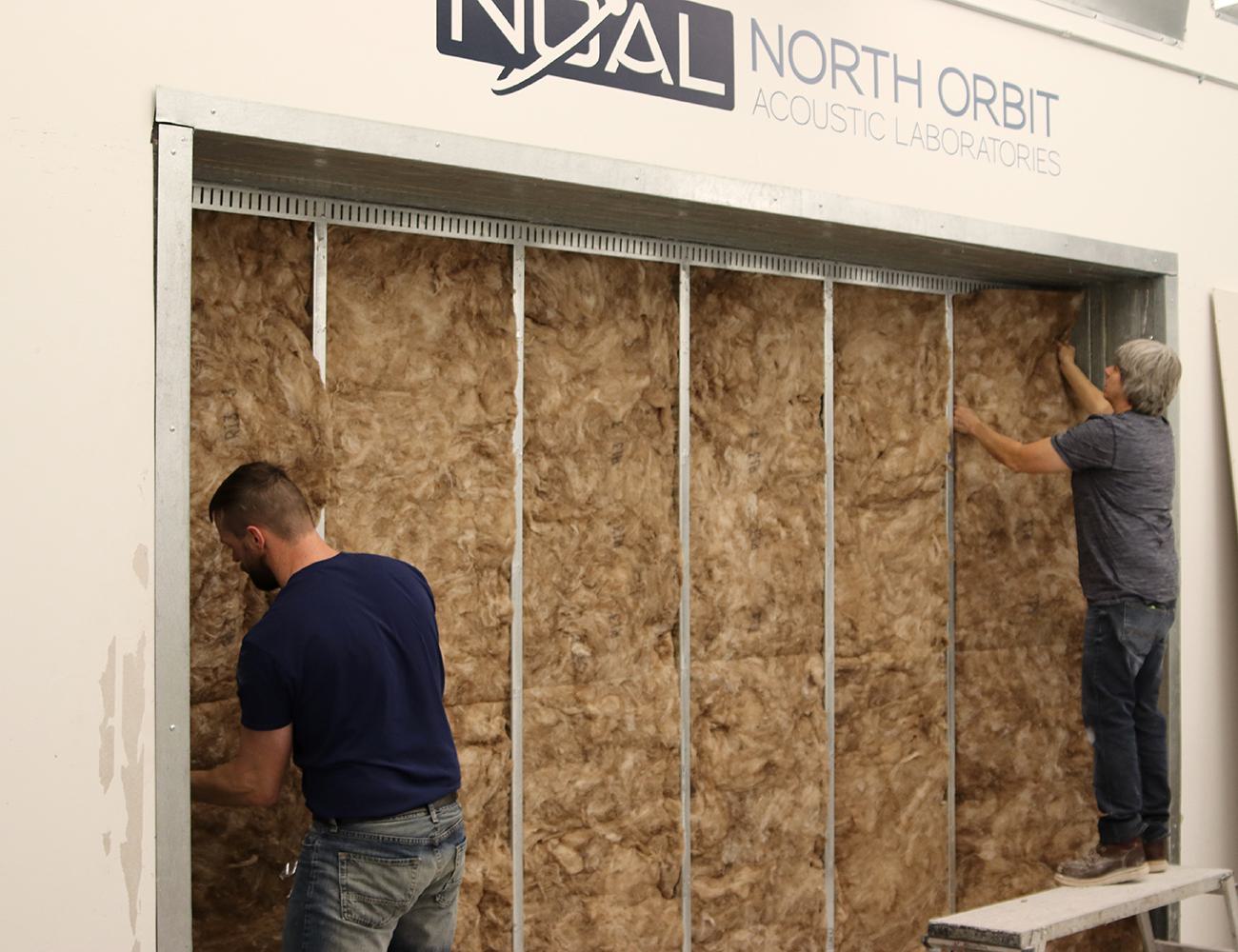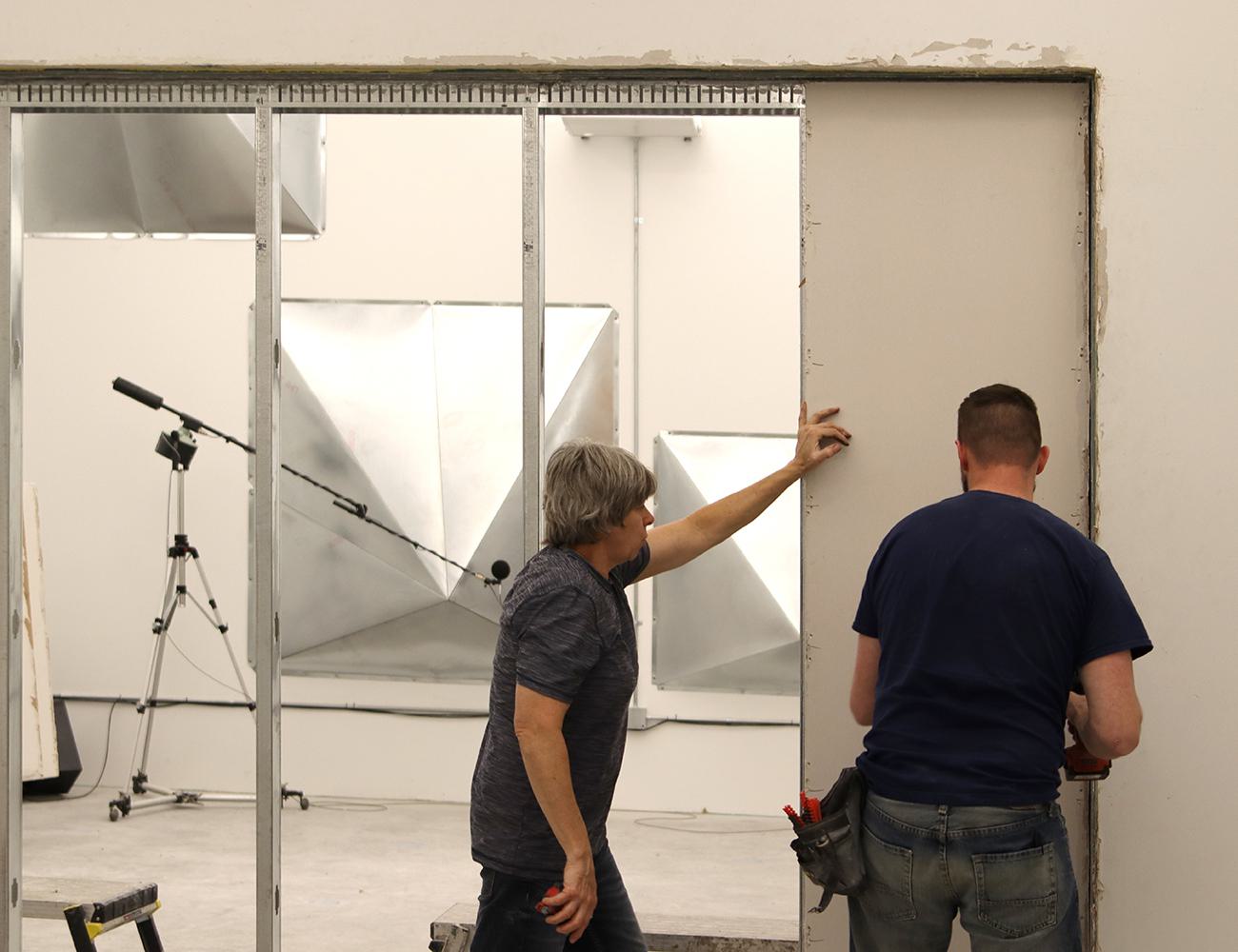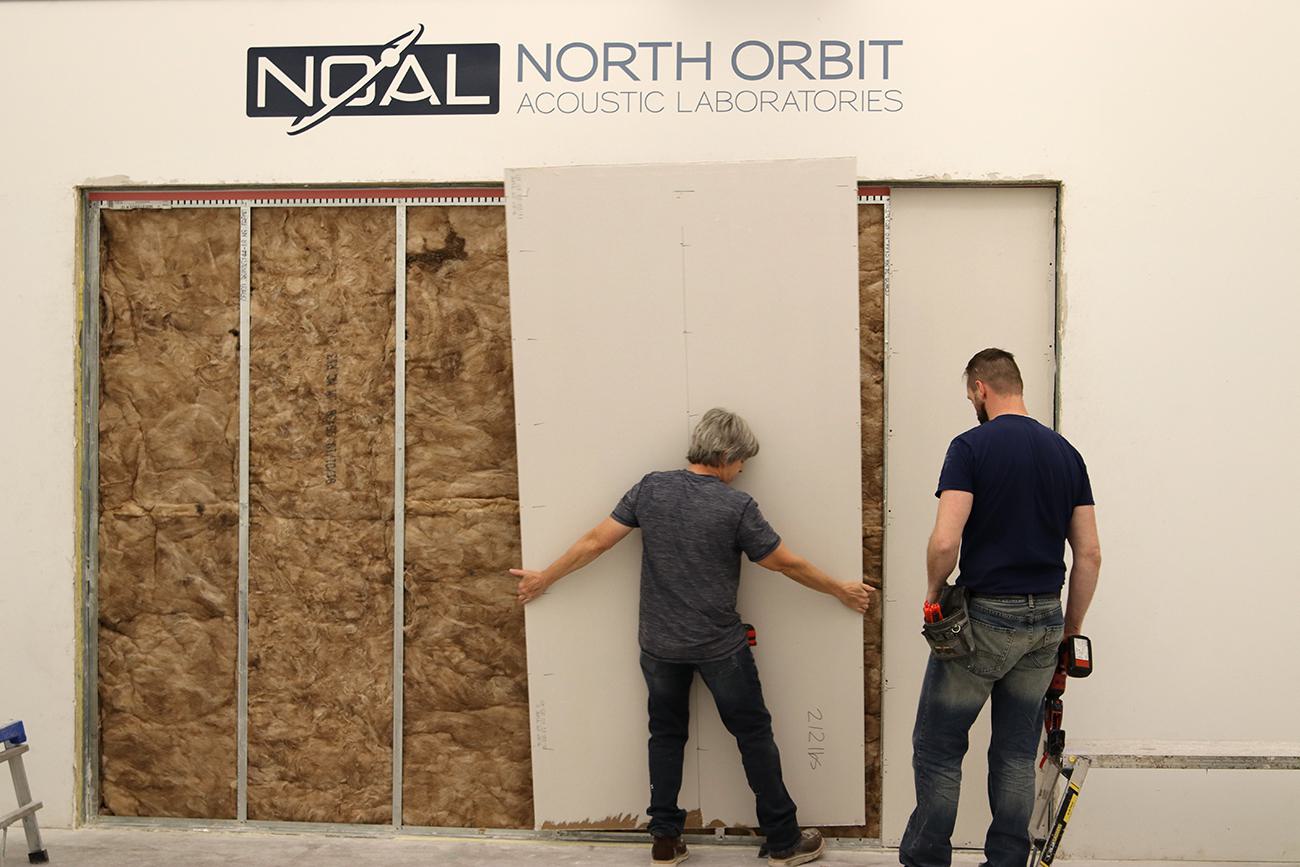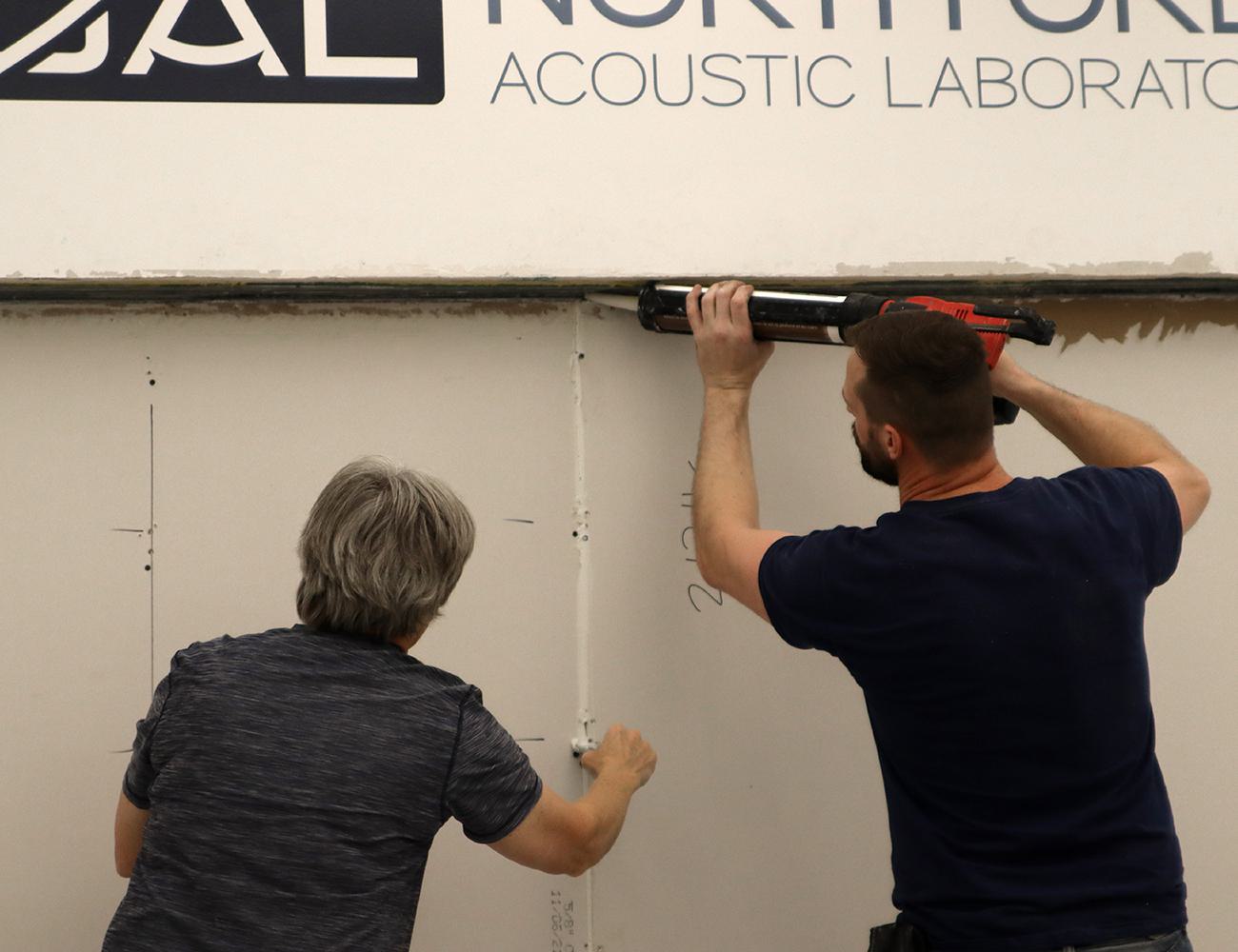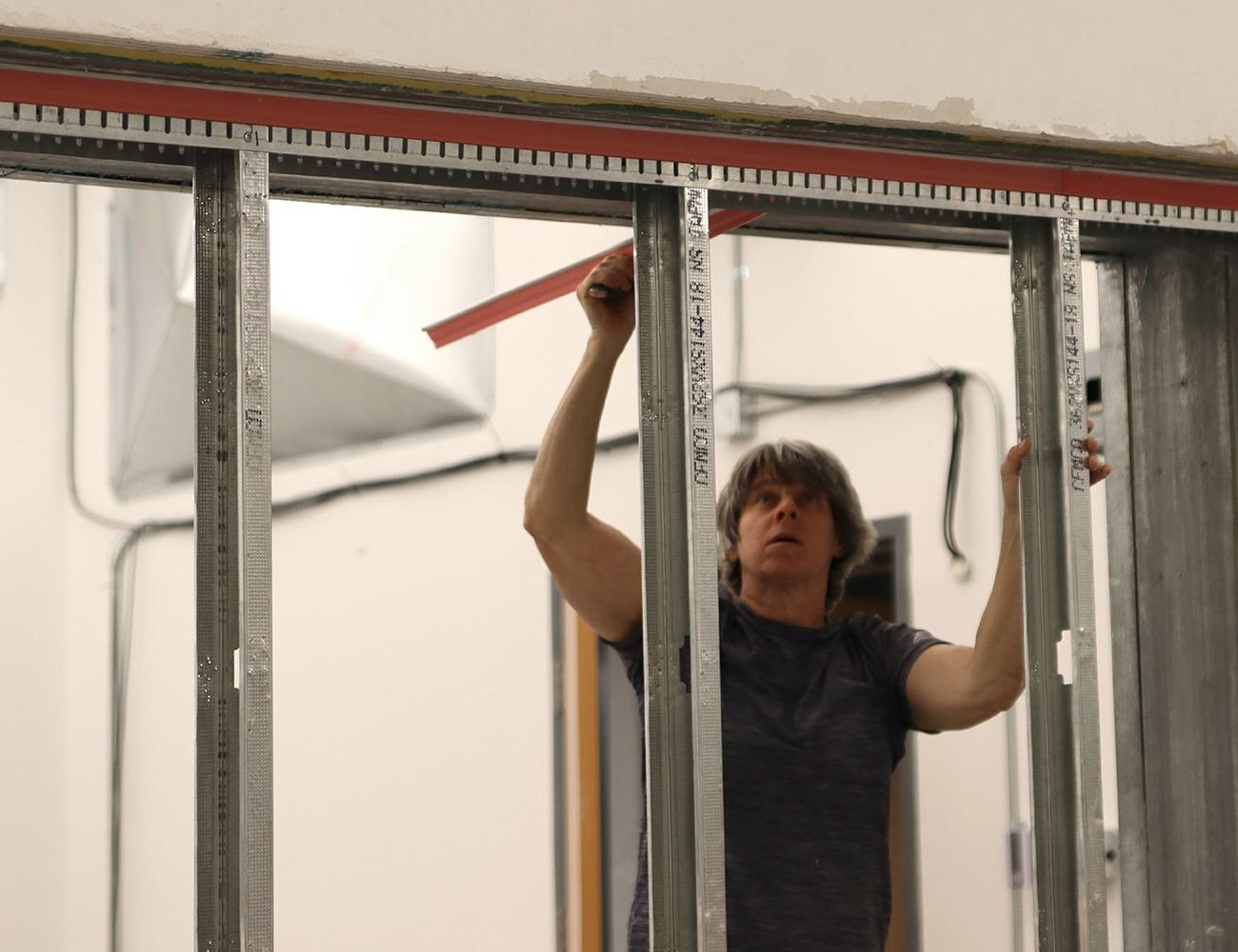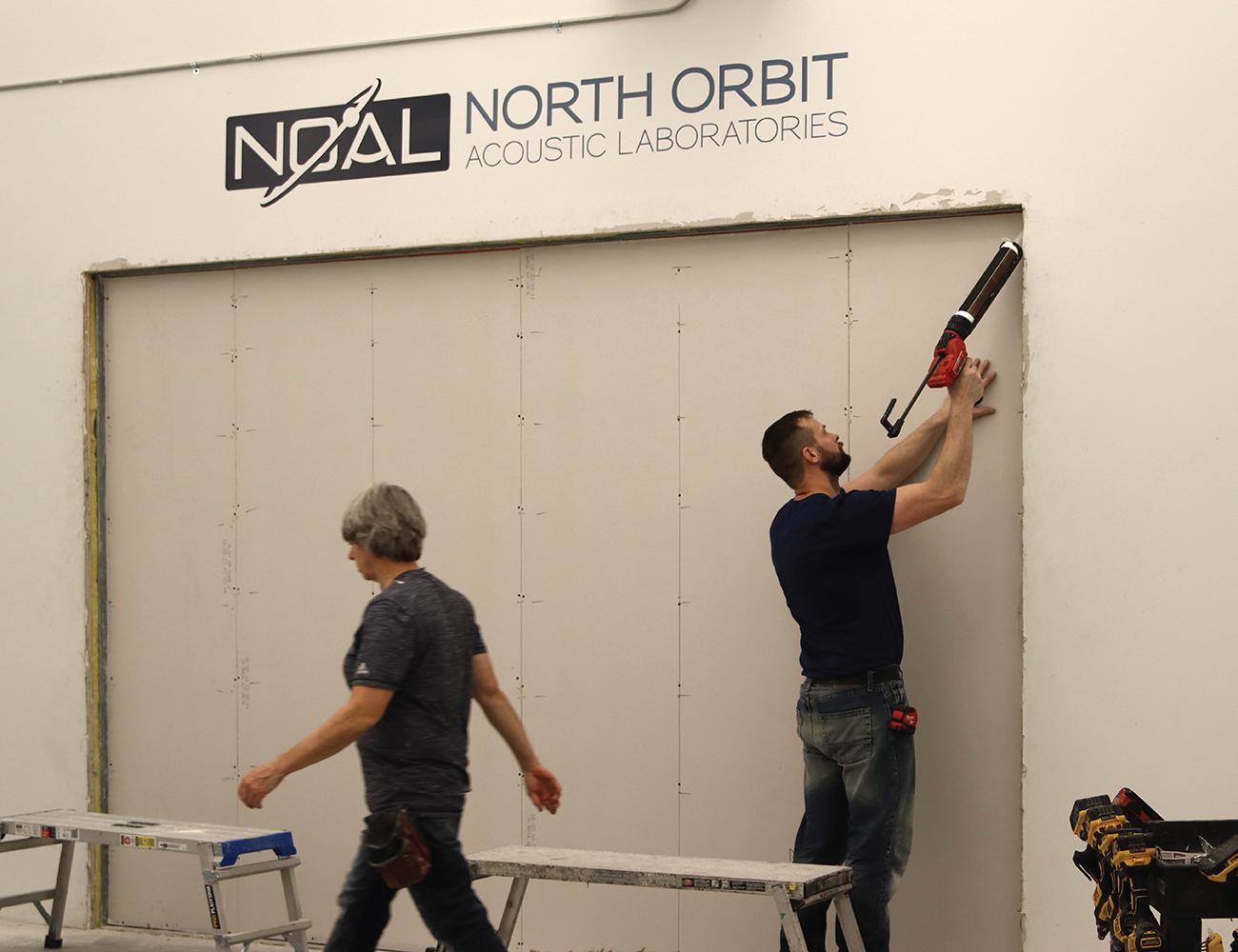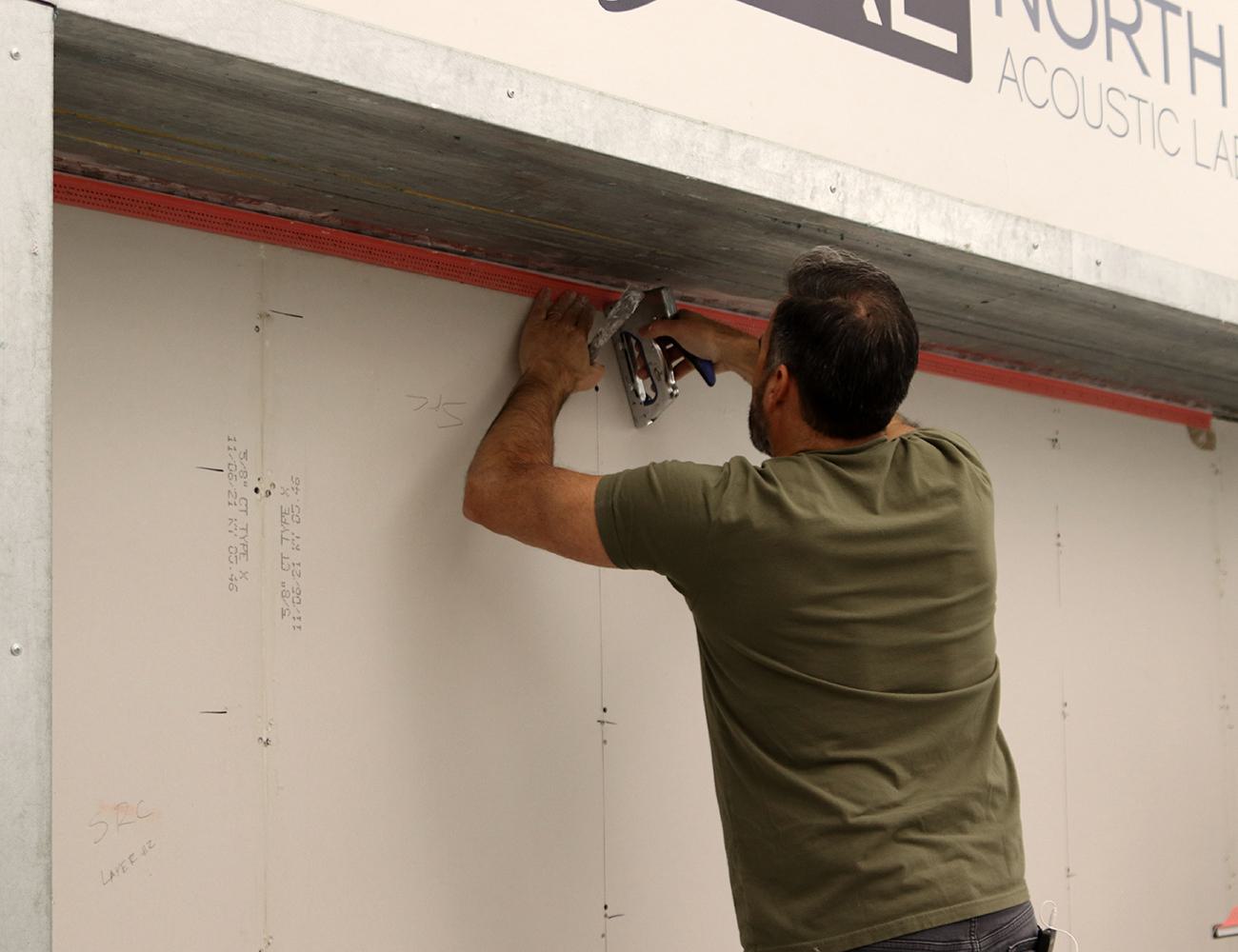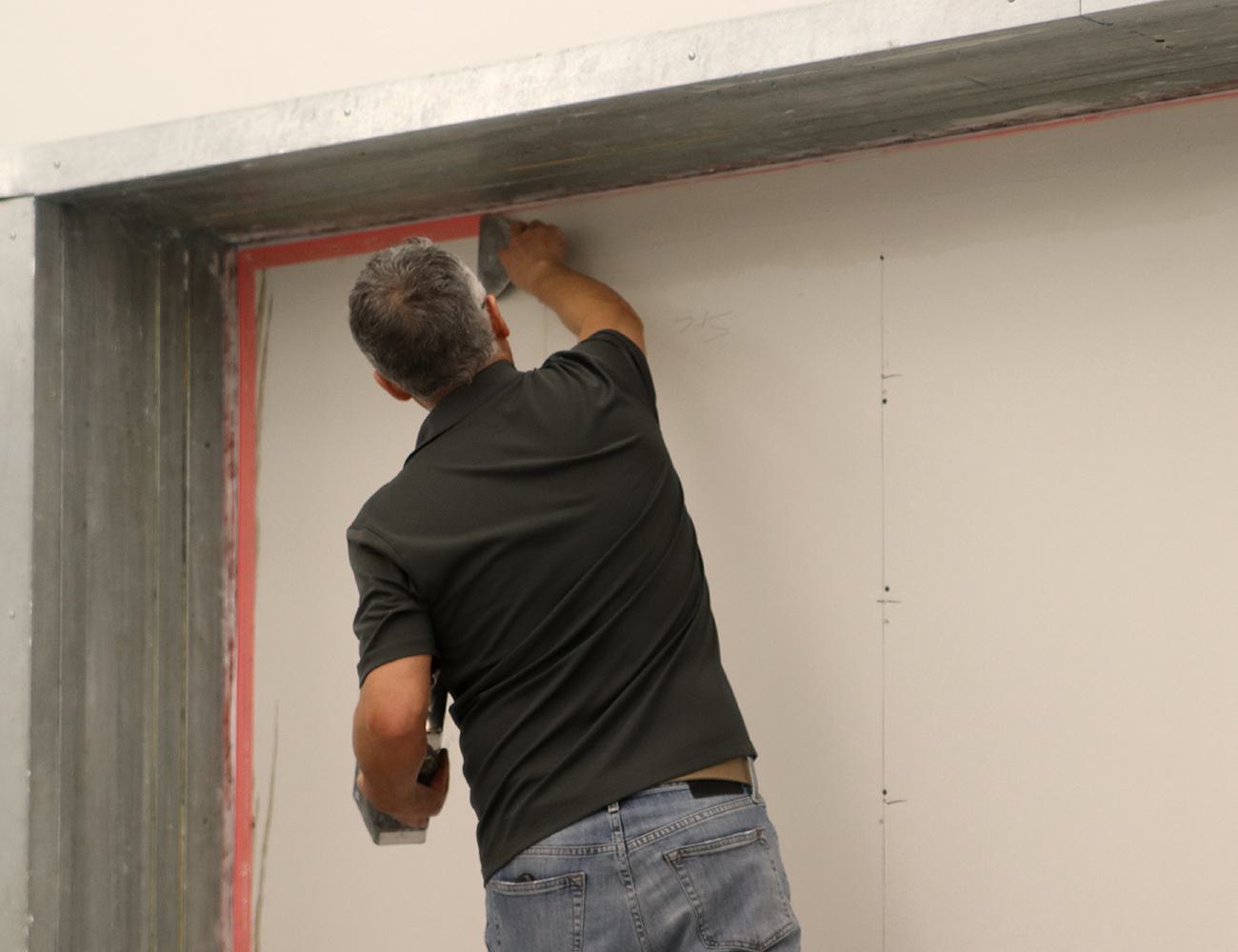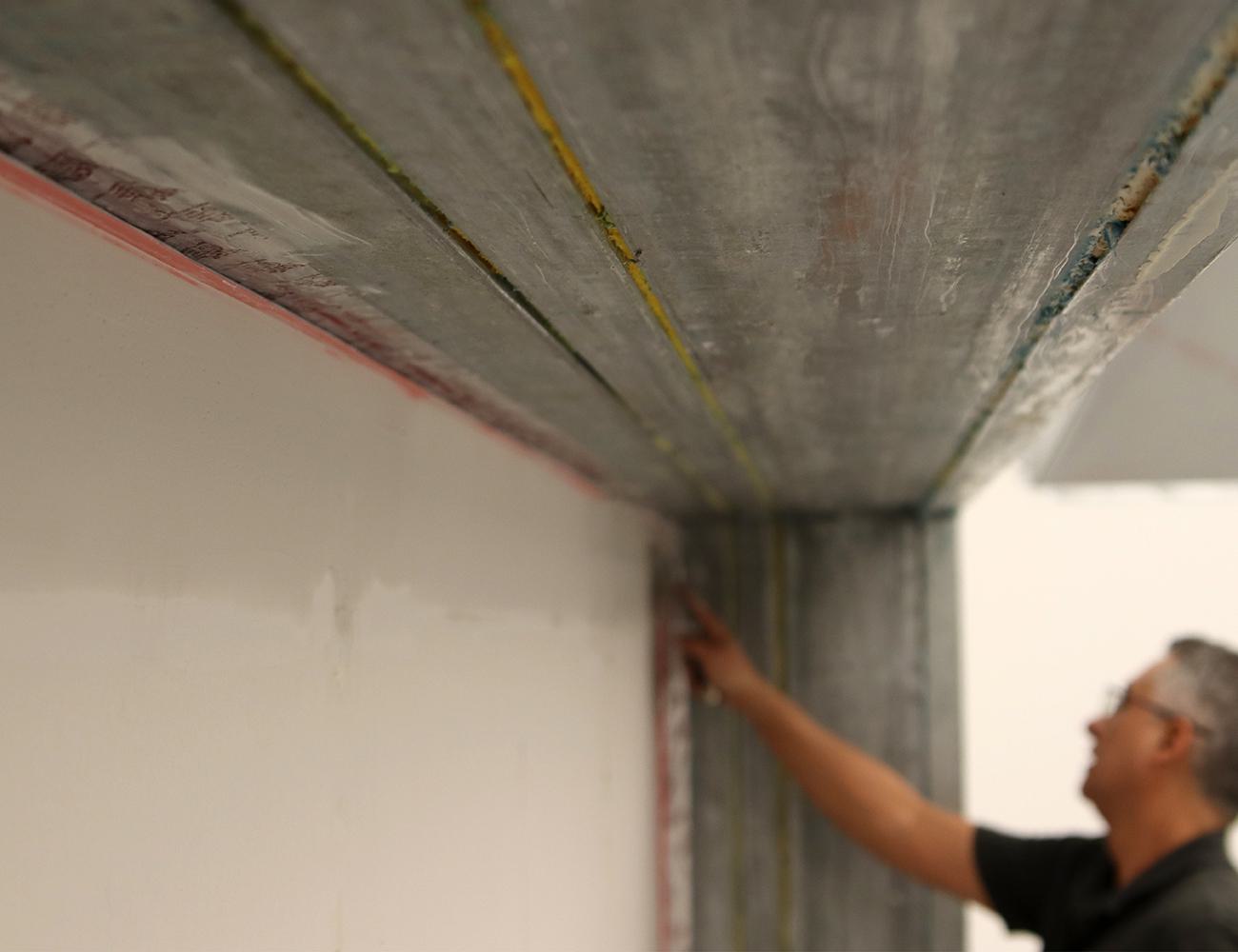Here’s the bottom line: all of Trim-Tex’s code compliance solutions, from Sound Gasket to Fire Bead, have the same or better soundproofing capabilities as acoustical caulk, with none of its drawbacks. But how do we know that? If we say something like, “This vinyl bead achieves a Sound Transmission Class (STC) rating of 50,” how did we land on that number? Well, rest assured, we didn’t just make it up — they have been rigorously tested by a third-party lab long before you install them into your walls. Curious? Here’s how Trim-Tex’s code compliance solutions are tested for soundproofing power.
In December 2021, we visited North Orbit Acoustic Laboratories in St. Paul, Minn., where the team there was putting three of our fire rated drywall accessories — Hotrod XL, Fire Bead and Fire Gasket — to the ultimate soundproofing test against acoustical sealant. Check out the video below to see for yourself what happened when Hotrod XL and Fire Bead went head-to-head against sound-rated caulk, and read on to learn more.


